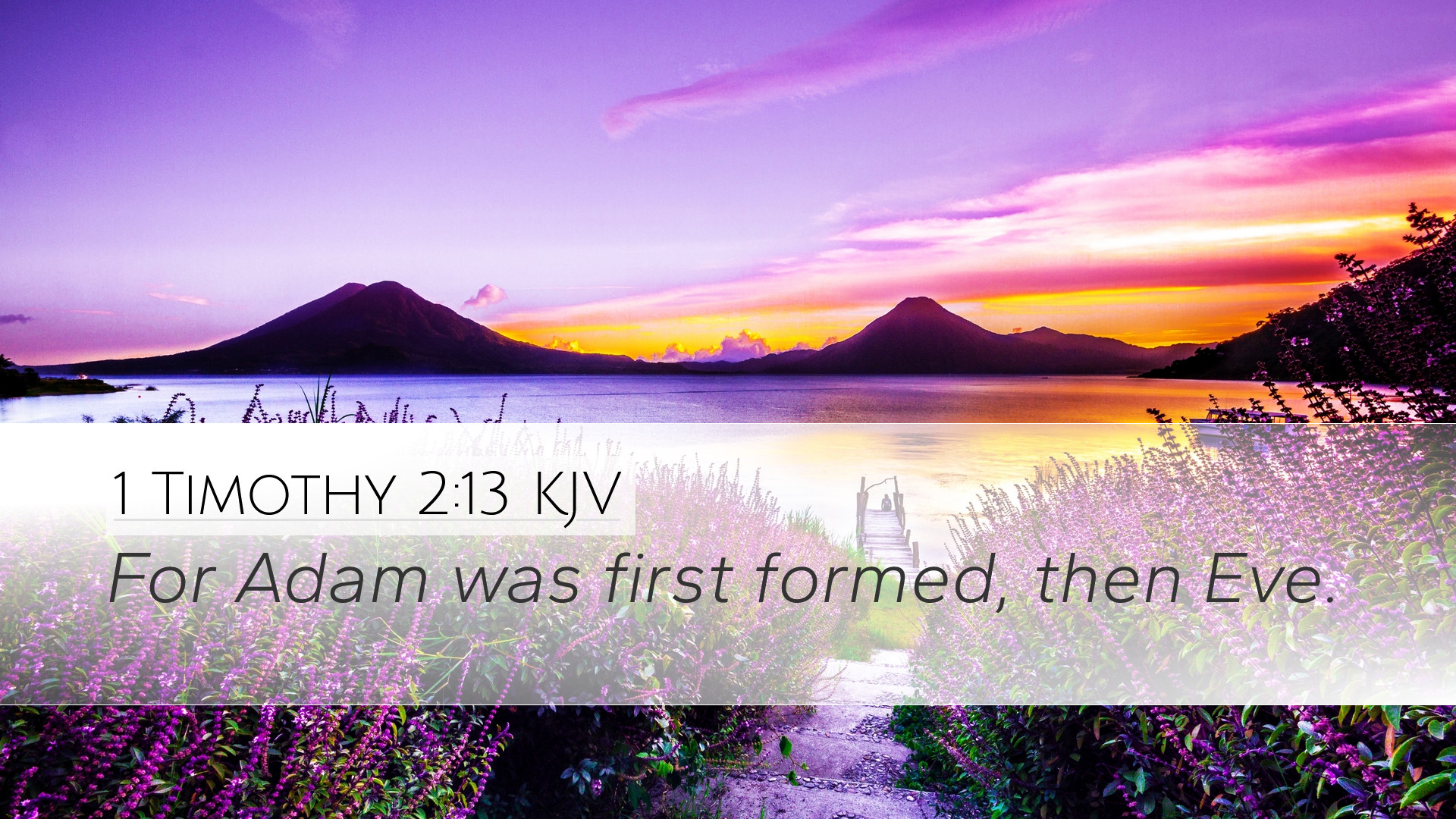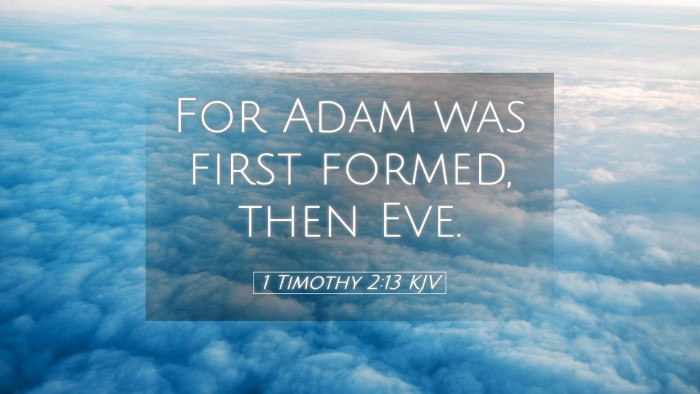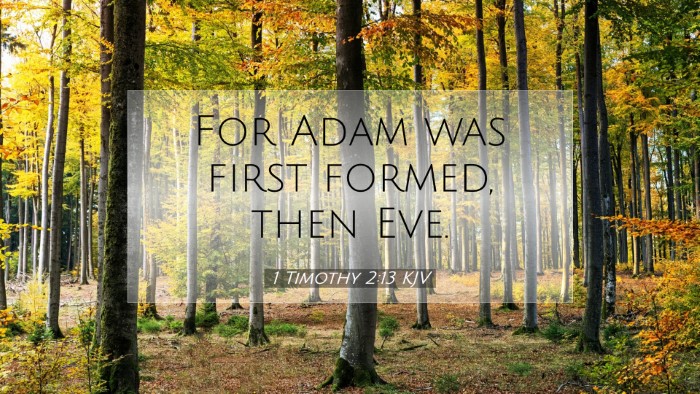Old Testament
Genesis Exodus Leviticus Numbers Deuteronomy Joshua Judges Ruth 1 Samuel 2 Samuel 1 Kings 2 Kings 1 Chronicles 2 Chronicles Ezra Nehemiah Esther Job Psalms Proverbs Ecclesiastes Song of Solomon Isaiah Jeremiah Lamentations Ezekiel Daniel Hosea Joel Amos Obadiah Jonah Micah Nahum Habakkuk Zephaniah Haggai Zechariah Malachi1 Timothy 2:13
1 Timothy 2:13 KJV
For Adam was first formed, then Eve.
1 Timothy 2:13 Bible Commentary
Commentary on 1 Timothy 2:13
1 Timothy 2:13 (KJV): "For Adam was first formed, then Eve."
Introduction
The verse 1 Timothy 2:13 addresses the order of creation, and it has sparked significant discussion among theologians and biblical scholars. This commentary combines insights from established public domain sources, emphasizing the theological implications of Paul's assertion and its relevance to the order of authority in the church and marriage.
Theological Context
In this epistle, the Apostle Paul offers instruction to Timothy on the conduct expected in the church at Ephesus. Central to this discourse is the role of men and women in worship and teaching. Paul roots his directives in the creation narrative, where he highlights the order instituted by God.
Creation Order as a Foundation
Commentators such as Matthew Henry note that Paul's reference to Adam and Eve serves to establish a divine hierarchy, not merely a cultural one. Henry argues that since Adam was created first, he holds a position of leadership, which is further echoed when he states that Eve was created as a "help meet" for Adam. This foundational order reflects God's intention in both the family and the church.
The Role of Adam and Eve
Albert Barnes expands on this notion by examining the implications of the creation order on gender roles. He argues that Paul uses this order to reinforce the responsibility that comes with authority. Just as Adam was entrusted with the care of the Garden of Eden, men bear a similar responsibility in spiritual matters within the church. Barnes also emphasizes that Eve's creation from Adam underlines mutual dependence and complementarity rather than competition for authority.
Lessons for Leadership and Authority
Adam Clarke posits that the creation order gives a profound insight into divine purpose concerning authority structures. He notes that authority does not equate to superiority but rather suggests a divinely ordained role. This divinely instituted order calls both men and women to embrace their roles humbly and with respect for God's design.
Implications for Contemporary Church Practice
The implications of 1 Timothy 2:13 extend beyond mere historical observations of creation; they challenge modern churches to reflect on gender dynamics within their leadership structures. The insights from Henry, Barnes, and Clarke urge contemporary readers to consider how these theological tenets can foster unity and clarity about roles while recognizing the giftings within the body of Christ. The order of creation serves as a guide for those engaging in ministry, promoting a spirit of cooperation rather than competition.
Countering Misinterpretations
In addressing various interpretations of this verse, it’s essential to highlight the caution offered by Henry against adopting a negative view of women’s roles in the church. He insists that the call is not for women to be seen as less valuable or capable but to appreciate the distinct purposes God has ordained for them. Barnes echoes this sentiment by emphasizing the necessity for mutual respect among genders in the pursuit of fulfilling God’s mission.
Conclusion
In conclusion, 1 Timothy 2:13 is rich with theological significance, calling believers to a deep understanding of God's design for order in creation. The reflections from revered commentators such as Matthew Henry, Albert Barnes, and Adam Clarke provide a multifaceted view of this verse. They collectively underscore the importance of recognizing the divine order established at creation as a blueprint for church governance and family structure. Appreciating this order can lead to healthier relationships within the church and a more profound understanding of God's intentions for each individual.


